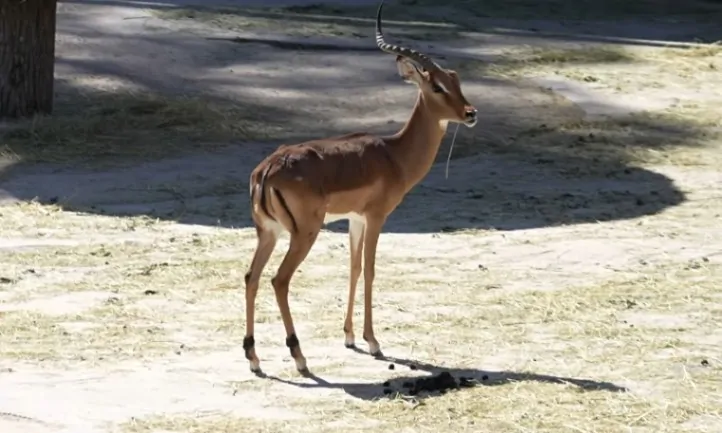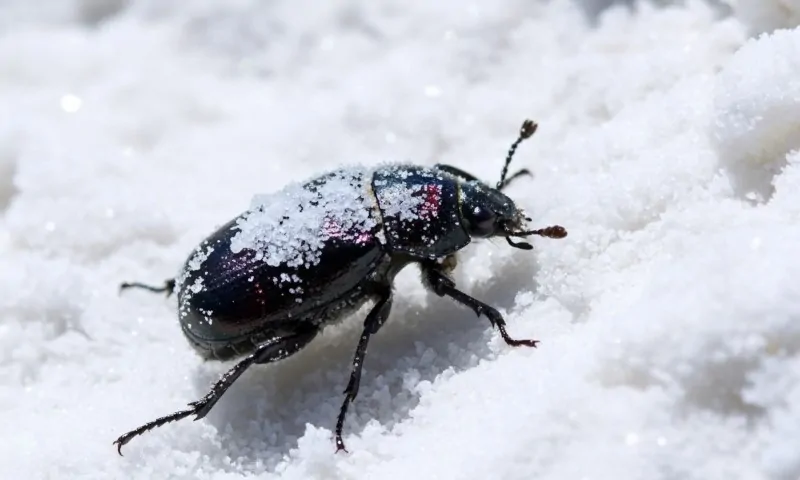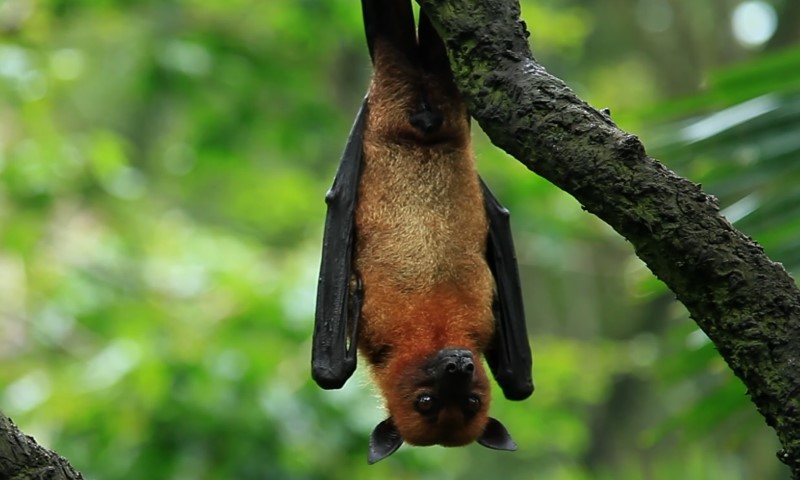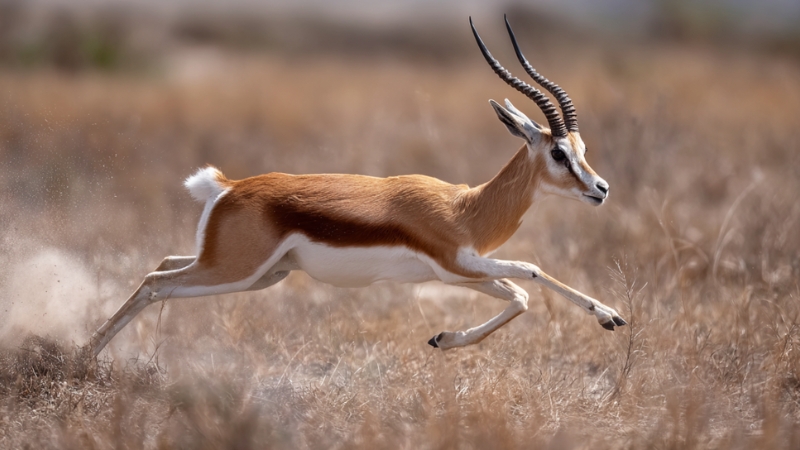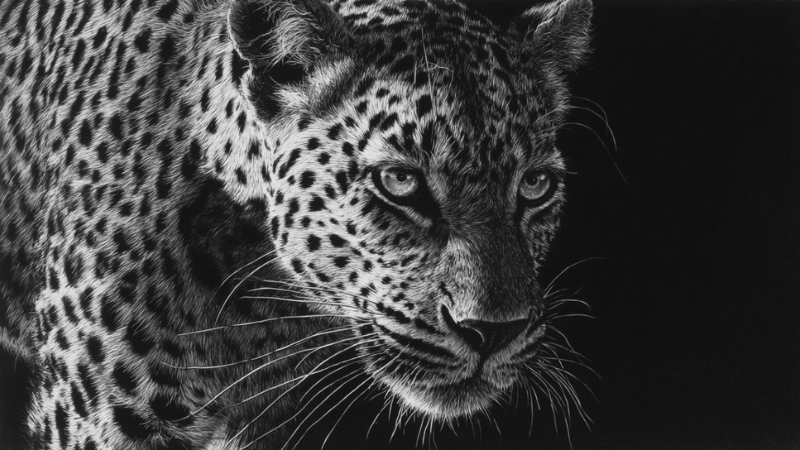Antelopes can seem like statues in the wild. No ear twitch, no tail flick, not even a slow chew. To someone watching through binoculars, it might look like they have gone into a trance. But that quiet stance is far from blank stillness.
What looks like nothing is often a set of finely tuned strategies for dealing with danger, heat, or digestion. For a few species, it even serves as a resting state that works better than lying down.
Let’s take a look at what is actually going on when antelopes stop moving, why they do it, and how long those pauses really last.
Table of Contents
ToggleQuick Answer
Standing still in antelopes usually falls into one of four categories:
- Freeze response during danger assessment
- Upright rest paired with rumination when lying down is risky
- Heat control using shade or breezes, often for hours in desert environments
- Sentinel-style vigilance where safety outweighs feeding time
In most species, stillness lasts seconds or minutes, not hours. The exception is in desert antelope, where extreme heat makes prolonged standing in shade an adaptive cooling tactic.
Myth Check – “They Can Stand for Hours Without Moving”
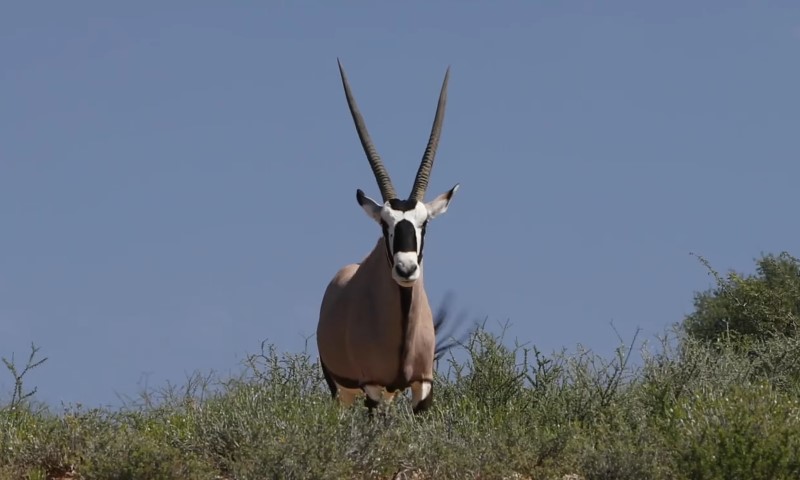
It is true that some antelope species, such as the Arabian oryx , can appear nearly motionless all afternoon. But the reason has more to do with heat and water conservation than with zoning out.
In the desert, where water is scarce, oryx save precious moisture by limiting movement and staying shaded. They even let their body temperature rise during the day, storing heat that they later release at night, a physiological process called adaptive heterothermy .
Researchers studying free-living Arabian oryx found that they often stayed in shaded areas from late morning until evening, conserving water that would otherwise be lost through sweating or panting.
By contrast, most grassland or forest antelopes rarely stay motionless for that long, as per Research Gate . For example, the four-horned antelope might freeze after sensing a predator, but that behavior usually lasts seconds or a few minutes, rarely longer than 17 minutes in observed cases.
Another fascinating case comes from the Tibetan antelope . Scientists recently described a unique behavior they called “ puppet resting ,” where the animals stand still in a relaxed, head-down position while ruminating.
On average, each episode lasts one to two minutes, mainly during calm midday weather. Males show this behavior far more than females.
The Four Main Reasons Antelopes Stand Still
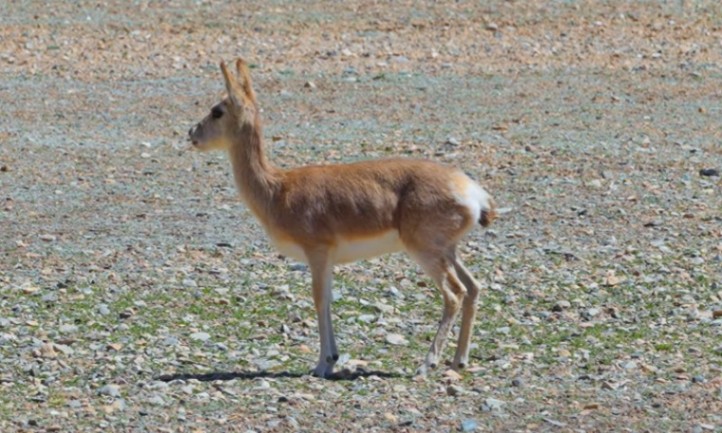
Antelopes pause for more than one reason. Each moment of stillness serves a purpose, whether it’s safety, rest, heat control, or watchfulness.
1. Freeze to Check for Danger
When antelopes sense potential danger, they often freeze , a behavior shared by many prey animals. The body locks up, muscles quiet, and eyes fix on the source of concern. The purpose is simple: avoid drawing attention while assessing the situation.
In the four-horned antelope , freezing bouts can last from a few seconds to around 17 minutes. During that time, the animal gathers visual and auditory information while reducing movement cues that might trigger a predator’s pursuit.
Every second spent in vigilance is a second not spent feeding. Studies across mammals and birds show that more vigilance usually means less foraging, creating a tradeoff between safety and nutrition.
Group living helps reduce this cost. In species like impalas and gazelles , individuals spend less time scanning for predators when surrounded by more group members.
Field Cues
- Head held high above the shoulder line
- Ears swiveling
- Occasional small neck or eye movements
- Still posture followed by either relaxation or sudden flight
2. Upright Rest with Rumination
Antelopes are ruminants , meaning they digest food in multiple stages. After grazing, they often rest quietly to chew cud. Most medium-sized antelopes lie down for that phase, but some have evolved a different strategy.
The Tibetan antelope has been observed resting upright in a posture dubbed “ puppet resting .” They stand motionless with the head drooping below shoulder level, occasionally chewing.
Males display it far more than females, especially at midday. Each session lasts roughly a minute or two and may end with a quick leg shake.
Why would they do this? Standing rest eliminates the effort and risk of lying down and standing back up, a real advantage on open plateaus where predators are nearby. It also keeps them ready to bolt if a threat appears.
Large hoofed mammals, including antelopes, can stand for long periods thanks to a system of ligaments and tendons known as the stay apparatus .
This passive support lets them bear weight with little muscle effort, making short standing rests possible.
Field Cues
- Head and neck angled gently down
- Jaw movements showing cud chewing
- Little to no scanning or twitching
3. Heat Control in Harsh Environments
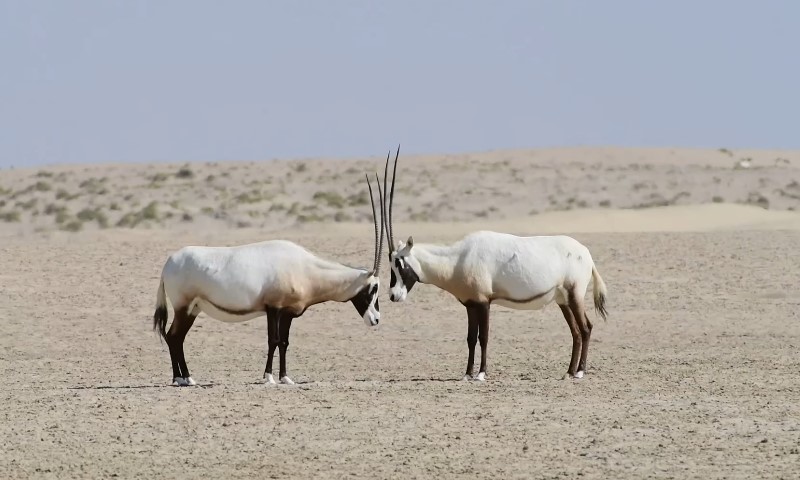
Desert antelopes face a constant challenge: staying cool without wasting water. Instead of sweating, they use a mix of behavioral and physiological tactics.
Species like the Arabian oryx and addax reduce activity during the hottest hours, seek shade, and stand or lie still to minimize heat gain.
Research published in the Journal of Experimental Biology showed that oryx can raise their core temperature several degrees in summer, allowing them to avoid evaporative cooling entirely for part of the day.
Other heat adaptations include:
- Facing directly toward or away from the sun to reduce exposed surface area
- Choosing bright, reflective ground instead of dark vegetation
- Selecting open, breezy areas that lower skin temperature and discourage biting flies
Field Cues
- Groups clustered in partial shade or on breezy ridges
- Minimal movement, gentle shifts in stance
- Long midday stillness lasting several hours
4. Sentinel-Style Vigilance in Herds
In social species, antelopes often take turns standing still to watch for danger . It is a kind of cooperative lookout system where individuals alternate between feeding and scanning.
An impala in a mixed group with zebras or wildebeest, for instance, may spend less time scanning because other animals also serve as sentinels. Conversely, when cover is low or young calves are nearby, each antelope may spend more time standing alert.
Field Cues
- Repeated head-up scans
- Rotation among group members
- Stillness interrupted by short feeding bouts
How to Tell Which Behavior You Are Seeing
| Clue | Likely Behavior | Typical Duration | Why It Happens |
| Head high, ears twitching, scanning horizon | Freeze or vigilance | Seconds to ~17 minutes | Assess risk while staying undetected |
| Head below shoulders, chewing, ends with leg shake | Upright rest or rumination | Around 1–2 minutes | Rest and digest while staying ready to flee |
| Long shade sessions, facing wind, barely moving | Heat control | Hours in desert species | Conserve water, manage heat storage |
| Rotating lookouts, short head-up bouts | Sentinel vigilance | Seconds to minutes | Share safety duties in groups |
Species Spotlights
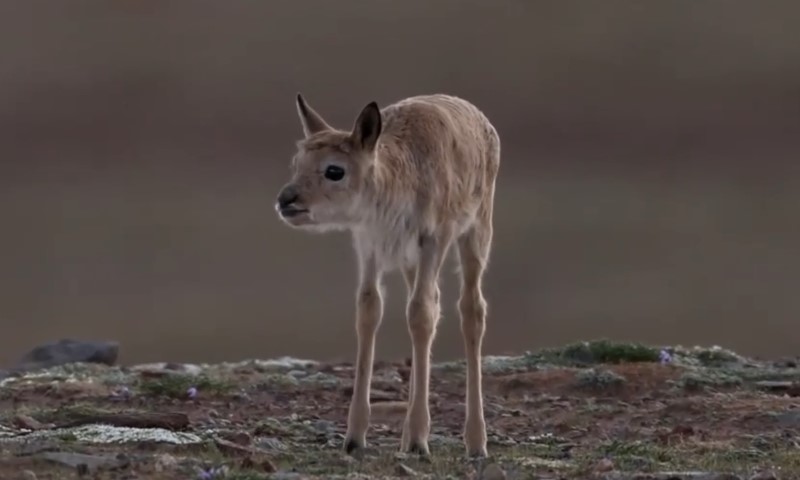
Every antelope species has its own reason for standing still. From high plateaus to arid deserts, their stillness takes different forms and serves distinct purposes.
Tibetan Antelope
- Behavior: Standing rest with head dropped below shoulder height, occasional cud chewing
- When: Midday, especially in calm sunny or cloudy weather
- Who: Mostly adult or subadult males—nearly half of observed males show it versus about six percent of females
- Duration: One to two minutes per session
- Why It Helps: Reduces effort of lying down, keeps them ready for flight, may help dissipate body heat through air contact
Arabian Oryx
- Behavior: Standing or lying in shade for most of the day, almost no movement
- Purpose: Reduce heat load and conserve water by allowing body temperature to fluctuate
- Scientific Backing: Studies measuring core temperature in free-ranging oryx confirm heat storage as a water-saving strategy
- Field Impression: To an observer, they appear frozen for hours, especially during extreme desert heat
Impala and Gazelles
- Behavior: Alternating short scans and feeding, adjusting vigilance with group size and environment
- Why It Matters: Safety is balanced with feeding efficiency—smaller groups spend more time scanning
Four-Horned Antelope
- Behavior: Motionless in forest undergrowth
- Duration: Seconds to 17 minutes before a silent retreat
- Purpose: Avoid detection in dense cover, where running immediately could be riskier than staying still
Why Upright Rest Is Possible at All
Standing for long periods seems tiring, but many hoofed animals have a mechanical advantage.
While horses are the best-studied example, the same principle applies across ungulates, including antelopes. It means they can rest lightly while standing, just not fall into deep sleep.
So when a Tibetan antelope “rests” upright, it is not using much energy. Its body structure supports that quiet pause almost automatically.
Practical Tips for Wildlife Guides, Filmmakers, and Field Biologists
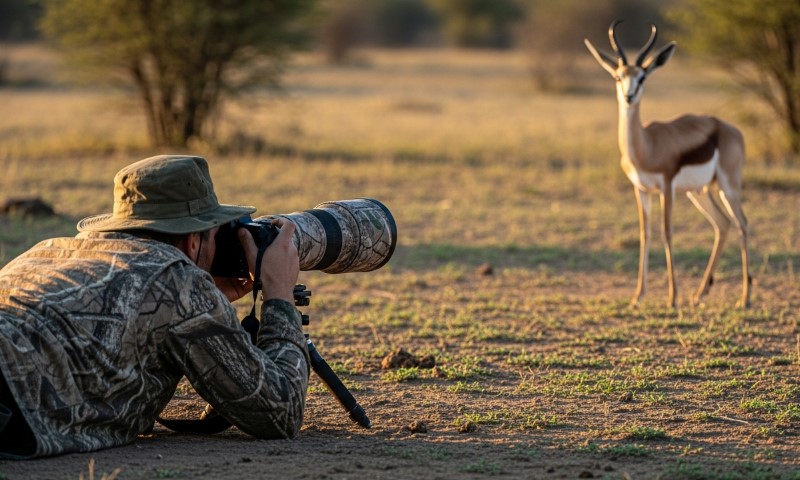
Field observers often mistake stillness for simplicity. In practice, reading antelope behavior takes context, timing, and a sharp eye.
1. Record the Context
Time of day, temperature, and habitat type give critical clues. A still oryx in desert shade at noon signals heat management, while a motionless impala in morning grass may be scanning for predators.
2. Watch Head Angle
- High head, active ears: Vigilance or freezing
- Low head, slow chewing: Rumination or upright rest
3. Time the Bout
Short pauses (under five minutes) usually indicate vigilance. Long immobility in blazing heat suggests thermal conservation.
4. Note Sex Differences
In Tibetan antelope, upright resting is mainly a male behavior. Similar differences might show up in other species based on size, horn structure, or reproductive role.
5. Recognize the Cost of Stillness
Every pause reduces feeding time. When groups are small or calves are nearby, vigilance increases because the safety payoff outweighs lost grazing minutes.
A Note on Sleep
People often wonder if antelopes sleep while standing. The short answer: not deeply.
Like other ruminants, antelopes need to lie down for deep, restorative sleep. Standing rest is more like a light nap or relaxation phase.
Horses can do it using the stay apparatus, and antelopes likely achieve a similar partial rest. But full, REM-like sleep happens only when they recline.
Takeaways
- Most antelope “stillness” is brief and purposeful—part of scanning, resting, or digesting.
- True multi-hour immobility appears mainly in desert species like the Arabian oryx , where heat and water stress shape behavior.
- The Tibetan antelope’s “puppet rest” shows that even medium-sized species can stand quietly for short bouts, aided by passive limb mechanics.
- Standing still is never random. It is an intelligent balance of energy use, heat control, and safety, all adjusted to landscape and season.
Final Thoughts
When you see an antelope standing still on an open plain, you are not watching an idle creature.
You are seeing a survival strategy shaped by millions of years of desert suns, grassland predators, and tight energy budgets. That quiet moment might look peaceful, but it is pure efficiency at work.

